 Technology
Technology  Technology
Technology  Humans
Humans 10 Everyday Human Behaviors That Are Actually Survival Instincts
 Animals
Animals 10 Animals That Humiliated and Harmed Historical Leaders
 History
History 10 Most Influential Protests in Modern History
 Creepy
Creepy 10 More Representations of Death from Myth, Legend, and Folktale
 Technology
Technology 10 Scientific Breakthroughs of 2025 That’ll Change Everything
 Our World
Our World 10 Ways Icelandic Culture Makes Other Countries Look Boring
 Misconceptions
Misconceptions 10 Common Misconceptions About the Victorian Era
 Mysteries
Mysteries 10 Strange Unexplained Mysteries of 2025
 Miscellaneous
Miscellaneous 10 of History’s Most Bell-Ringing Finishing Moves
 Technology
Technology Top 10 Everyday Tech Buzzwords That Hide a Darker Past
 Humans
Humans 10 Everyday Human Behaviors That Are Actually Survival Instincts
 Animals
Animals 10 Animals That Humiliated and Harmed Historical Leaders
Who's Behind Listverse?

Jamie Frater
Head Editor
Jamie founded Listverse due to an insatiable desire to share fascinating, obscure, and bizarre facts. He has been a guest speaker on numerous national radio and television stations and is a five time published author.
More About Us History
History 10 Most Influential Protests in Modern History
 Creepy
Creepy 10 More Representations of Death from Myth, Legend, and Folktale
 Technology
Technology 10 Scientific Breakthroughs of 2025 That’ll Change Everything
 Our World
Our World 10 Ways Icelandic Culture Makes Other Countries Look Boring
 Misconceptions
Misconceptions 10 Common Misconceptions About the Victorian Era
 Mysteries
Mysteries 10 Strange Unexplained Mysteries of 2025
 Miscellaneous
Miscellaneous 10 of History’s Most Bell-Ringing Finishing Moves
Top 10 Sea Survivors
I have always been fascinated by people that survived extreme situations. I always wondered how long I would be able to survive if I was lost on a snow-covered mountain or ledge-locked on a cliff or trapped in the middle of the ocean on a raft. The answer is – it depends. It all depends on how prepared you are for the situation, or even how lucky you are. The simplest of things could end up saving your life, like a nail or a piece of string. It was surprising to learn that almost all the people from this list were rescued just in time except, in my opinion, the longest survivors. Thousands of people have been lost at sea, never to be seen or heard from again, but yet, there are a small handful that survive against every odd. One of the basic rules of survival is three hours without shelter, three days without water and three weeks without food. Could you prove this rule wrong?
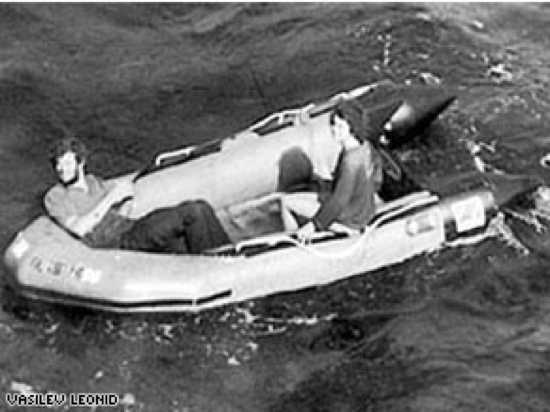
On a sunny day in late autumn of 1982, a boat set out on a routine trip from Maine to Florida. There where five people on board, John Lippoth and his girlfriend Meg Moony, Mark Adams, Brad Cavanagh and Deborah Scaling Kiley. Although they would have to endure each other’s company for quite a while on the trip, they were all strangers except for John and Meg. From the start of the trip things were going south as John and Mark just could not see eye to eye and were both heavy drinkers. The weather started to deteriorate on the 2nd day at sea, and by that evening the waters where raging with 60 knot winds and 15ft swells. Brad and Debora stood first watch for over 11 hours in the storm, while John, Mark and Meg where all below deck drinking. When John and Mark were sober enough to take their turn watching, Debora and Brad finally got some rest. They were woken in the middle of the night by panicked voices, and stood up to realize the boat was filling up with water fast. It turned out that John and Mark lashed the steering wheel and went back to sleep instead of staying on watch above deck.
They untied the life raft but it immediately blew away. Luckily they had an inflatable zodiac boat on board, which they inflated and got on the water. Everyone managed to make it to the zodiac, but Meg was caught in the rigging, and when she finally made it, she had deep lacerations, almost to the bone, on her arms and legs. Once they reached the zodiac, they tried flipping it round, but the wind kept blowing it back, so they ended up treading water for the next 18 hours while waiting for the storm to pass. Meg was exhausted and the others had to constantly support her weight just so that she wouldn’t slip beneath the water.
The next day, the storm had calmed down and they managed to turn the zodiac around and get in. Looking into the water from the boat they could see hundreds of sharks around them, and they stayed with them for the rest of the trip. By the third day, Meg had severe blood poisoning, and would lie in an almost catatonic state, without movement or speech. Mark and John had started drinking sea water that night and were becoming increasingly incoherent and delusional. John was the first to go, as he thought he could see land. He simply said that he was going to the shop for some cigarettes, slipped over the side and swam a short distance. The people on the zodiac heard a scream and then just silence and John was gone. Around the same time, the delusional Mark said he wanted to cool off and slipped into the shark-infested waters, there was a thud beneath the zodiac, and the water around them turned red as Mark disappeared from view. During the fourth night, Meg died.
The next morning when Brad and Deborah woke up, Meg’s body was stiff and they rolled her into the sea. It was not long after that they saw a boat coming towards them. The boat saw them and hauled them on board to end their tormenting journey.
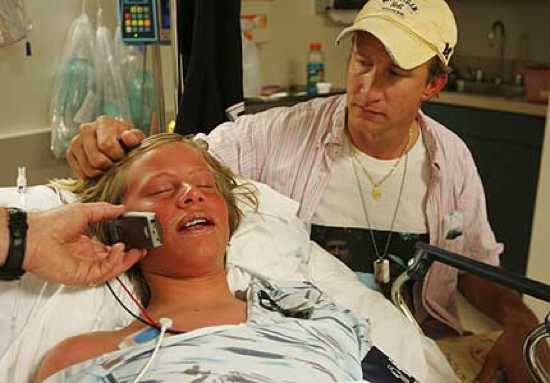
On 25 April, Josh Long (17) and his best friend, Troy Driscoll (15), decided to go shark fishing. They launched their boat into the sea, near where they lived in South Carolina, without noticing the rip tide warning flags on the beach. The tide swept them out faster than they could dream of paddling back within minutes. In the struggle to paddle back, Josh knocked his brand new fishing rod overboard, and in frustration over losing his rod, he threw their bait over as well.
The boys started their hellish journey without any food or water or means to acquire either. In addition they also did not have any shade, or anything else, besides the clothes on their backs to shelter them from the blazing sun. All they could do to prevent heat stroke was to take short dips in the water, but after a close encounter with a shark, they stopped swimming as well.
They managed to hold on for an incredible six days with no water and only the occasional jellyfish as food. On the 6th day, after scratching dying messages into the boat, for their families, they heard a boat and managed to signal them to stop. After the rescue, both boys were taken to hospital to recover from the severe sunburns and dehydration that they suffered. Troy’s condition was so poor, that doctors said he would only have survived for a few more hours.
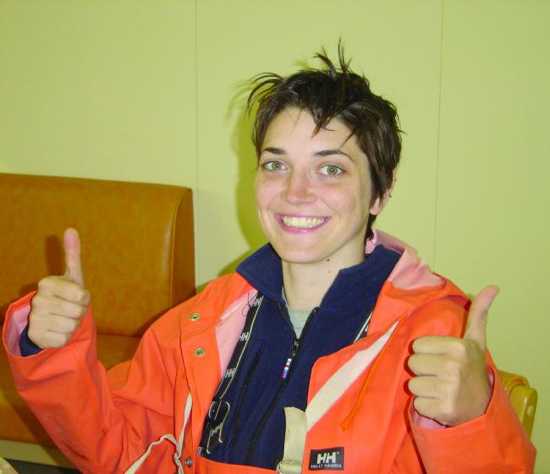
Amanda Thorns (25), her father Willie (64) and godfather Dennis White (64), set sail from the Cape Cod on the 6th of November. Even though Amanda had sailed around the Cape Cod area with her father many times before, this was to be her initiation into blue water sailing, and they planned to travel to Bermuda.
At about 12pm on the 6th, rough water rolled in and the three were forced into the cabin to try and wait tout the storm. On the 4th night, with the storm still raging, Captain Thorns stood watch on deck while Amanda and White tried to get some sleep. Between the 30ft waves came an even larger monster wave, and rolled the entire boat. The captain, along with the mast and almost all the rigging where swept off the boat and became tangled in a rope mess hanging down the side of the boat. They tried everything to pull the captain back on board when the ship turned around again, but their efforts where useless and they had to cut him loose to be swept away by the waves.
For the next three days Amanda and White grieved the loss of their father and best friend from below deck, constantly bailing out water and trying to keep warm, while the storm raged outside. Having lost all communication equipment and power to the boat, there was not much that they could do. Instead they listened to the anchor and mast (still hanging on the side of the boat)being slammed into the side of the boat over and over again, knowing that is could break the hull completely at any second. They tried to signal passing ships with half of their parachute flares to no avail.
Ten days after they had lost the captain, White managed to pull the anchor on board. As a last desperate survival attempt, white took the 10ft mast from the boats dinghy and tied it to what was left of the main mast. He flipped it open sideways and it caught wind. They managed to sail 50 miles on their first day, and on the second they were shooting off flares again, at a large tanker that was passing nearby. This time luck was on their side and the boat saw them. On 21 November they finally made it to Bermuda, grief stricken by the loss of the captain, but happy and lucky to be alive.
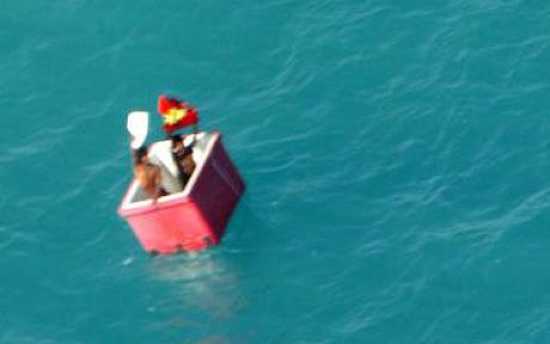
On 23 August, a 10m wooden Thai fishing boat, carrying 20 crew members, broke to pieces and sank in rough water. Most of the crew was forced overboard and where never seen again. Two men hung onto a large icebox, used to store fish, as the boat went down. They managed to climb into the icebox once it started floating, but there was no way for them to help any of the other crew members.
It is believed that the icebox was hounded by 50 knot winds caused by cyclone Charlotte, and it was by pure luck that the icebox did not capsize in the extreme weather conditions. The weather was both a blessing and a curse though, as the men would never have made it without the monsoon rains, which provided them with fresh drinking water almost daily.
They floated like that, with only some old fish that was left in the bottom of the icebox, and the rainwater which the icebox caught, until the 17th of January. They were spotted, by pure luck, by a routine customs search plane, which radioed a rescue chopper. The picture was taken from the customs plane, and shows the two men desperately waving their shirts in the air, in hopes of being spotted.
Following their rescue, they were taken to Thursday Island, where they were treated for severe dehydration, starvation and extreme sunburn. Once they had recovered, they were taken home to their surprised families.
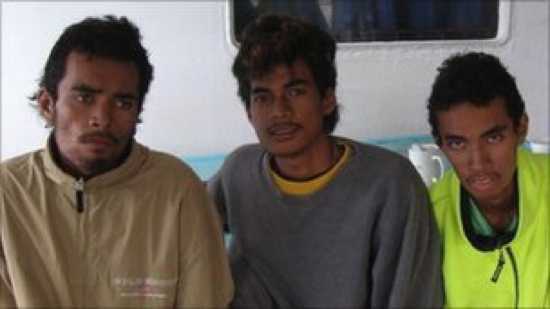
When Samu Perez (15), Filo Filo (15) and Edward Nasau (14) decided to row home from Atafu Atoll, in a small metal dingy, on the 5th October, they could never have known what they were in for.
The dingy was swept off course by strong currents, and they were presumed dead after a 1000km² turned up empty. Their parents, along with 500 family and friends, mourned their deaths and they held a memorial service for them, all the while the three where floating in the vast ocean. Shock and elation where probably some of the words the families used to describe the moment when their children where returned to them, some 50 days later.
While drifting, the boys managed to stay alive by catching and eating raw fish and a seagull that made the mistake of landing on the three starving children’s dingy. Every morning they would drink the rain water that had landed on the tarp and in the boat, which provided them with crucial moisture. About two days before their rescue, death became imminent when they started drinking sea water because of a lack of rain for several days.
Mercifully, the boys where spotted and rescued by a tuna boat, off the coast of Fiji, near the end of November. When they were found they could not even stand up unaided. They had drifted over 1600km (1000 miles) from the Atoll the Fiji, in 50 days. In hospital they were treated for severe dehydration, starvation and sunburn before being returned to their overjoyed parents.
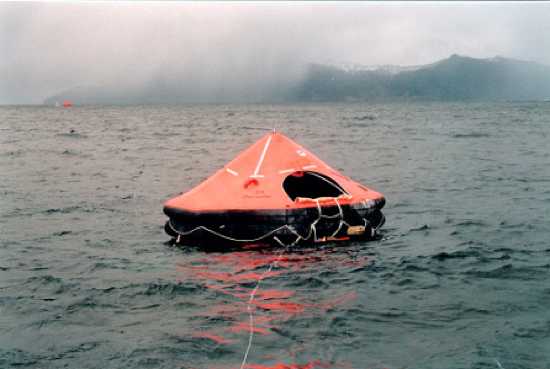
Steven Callahan was an avid sailor, naval architect and inventor, and was planning to sail from the Canary Islands across the Atlantic to the Bahamas, in a 6.5 meter self-built boat. About a week into his journey his boat was damaged during the night in bad weather, by something unknown (possibly a whale). He was forced to abandon ship and just managed to rescue his emergency supplies from the boat and inflate the life raft, before the boat sank. Among the emergency supplies that he saved were a sleeping bag, food and water rations, navigational charts, a speargun, flares, solar stills (for condensing sea water into fresh drinking water) and a copy of Sea Survival by Dougal Robertson.
Knowing that no one on land was expecting to hear from him for a few weeks, his survival instincts kicked in. Over the next 76 days he drifted with the south equatorial current and the trade winds.
After finishing the supplies saved from the ship, he tried his hand at spear-fishing, and he ate primarily mahi-mahi, tiger fish and flying fish. After he exhausted his water supplies, he used the solar stills to obtain some precious water during the day (all the stills combined produced about 500ml of water per day). On one occasion, the spear of his spear gun broke off in a fishes back, and as the fish continued to swim beneath the life raft, the spear ripped a massive hole in the bottom inflatable tube of the raft. This caused the raft to become impossible to stand on but Steven managed to repair the raft using some of the shade tarp.
On the 76th day at sea, being able to spot land for the first time in months, Steven had finally reached his destination. He was picked up by fishermen right off the coast of Guadalupe. He was taken to a local hospital, but didn’t even stay the night; instead he spent a month recovering on the island and then proceeded to hitchhike on boats through the West Indies.

Richard Van Pham was a 62 year-old man from Long Beach, California. He set out in May, on a 3-4 hour sailing trip to the resort Island of Catalina. Hitting stormy weather on the way broke his engine, mast and communication equipment. Unable to navigate his way back, he succumbed to the current and floated with his little boat for over three months.
He managed to catch and kill a turtle, which he ate and used as further bait. He would leave pieces of meat on the deck and when sea birds came to near to take the bait, he clubbed them on the head. He managed to evaporate seawater and used the salt to preserve the meat. He also managed to build a distilling device to evaporate and purify seawater to obtain fresh drinking water and he roasted seagulls on a small makeshift grill, using wood from the boat as fuel for his fire.
Every day he looked out over the horizon in hopes of spotting land or another boat, but almost every day he saw nothing. Then one day whilst looking out at sea, he saw a plane. The plane dipped its nose, as if to say “hi” and a couple of hours later a rescue boat came to his rescue after nearly four months at sea.
On a side note to this amazing feat of survival, Richard Van Pham was donated another sail boat after his rescue. This new boat had all the latest communication and navigation equipment on board. Not even two years later, he was discovered floating in the ocean again, luckily only for a couple of days, without a trace of the expensive equipment. After this rescue he was fined for not having the appropriate equipment on board.
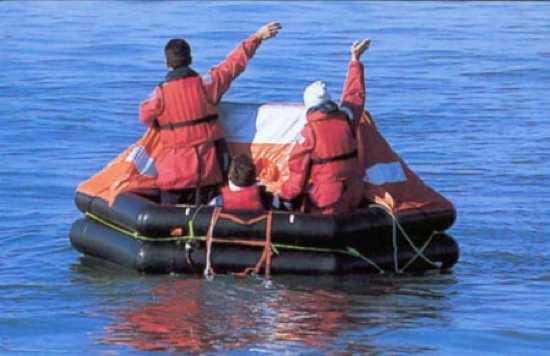
Marilyn and Maurice had been sailing their 31 ft yacht from South Hampton for quite a few months before disaster struck. They set out in June and were planning to sail and immigrate to New Zealand. By February the next year, they made safe passage through the Panama Canal, and that was the last anyone heard from them. About a week after their safe passage, their boat was violently struck by a whale. Seeing the huge hole in the side of the hull, through which water was gushing, they immediately inflated the life raft and an inflatable dingy (which Maurice had insisted they take along). They threw whatever possessions they had into the raft, and tied the two inflatables together. They managed to save some tins of food, a small oil burner, a map, a compass, a water container, knives, plastic mugs, passports, and some extra rubber and glue (for patches), before watching their yacht disappear into the ocean.
For the first few days, they ate the cans of food that they rescued, and drank rainwater. When their food ran out, they ate raw sea turtle, seabirds, fish and even sharks that they caught with their bare hands and small hooks fashioned from safety pins.
They counted seven ships that passed them but did not stop. With each passing ship, their hopes of rescue where crushed. As the days turned to weeks and the weeks turned to months, their clothes rotted on their bodies and they developed severe sores and sunburns. Their inflatable raft and dingy deteriorated to the point where they needed to be inflated daily.
On 30 June 1973, their ordeal finally came to an end, when a Korean fishing boat, spotting the small blob in the vast ocean, decided to turn back for a closer inspection. By the time the raft was hauled closer, they were both slipping in and out of consciousness, in what we can only presume was to be their last hours alive. They had each lost over 20kg and couldn’t stand or function by themselves. Finally, after drifting over 2400km and 117 days, they were saved.
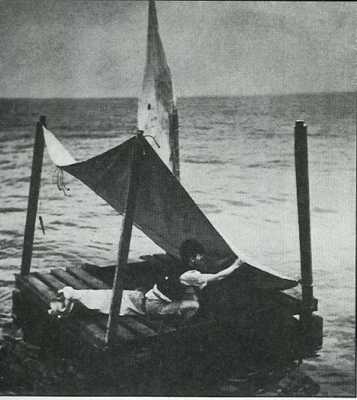
Poon Lim is a record holding sea survivor. As a 25 year-old Chinese seaman, Poon Lim was appointed second steward on a British Merchant ship. The ship left Cape Town with a crew of 55 on 23 November 1942. Just a few days after, they were torpedoed by a Nazi U-boat. The ship was sinking rapidly and Poon made the decision to jump over board. After the ship had disappeared beneath the ocean, he gasped for air between each wave, desperately looking for a life raft that could have inflated while the ship sank. Finally after struggling to stay alive for two hours, he spotted a life raft. He swam over to it and hauled his exhausted body on board
Also on board, Poon found a metal water jug, some tinned biscuits, some flares, an electric torch and a small supply of fresh water. He rationed himself to eat just two biscuits and drink just a few sips of water per day, calculating that he would be able to survive almost a month on the supplies he had. By the end of the first month, after seeing several ships but not being rescued, Poon realized that he would have to float on the raft until he found land.
He caught fish using the wire from the torch as a hook, with a piece of biscuit as bait. After he had caught one fish, it became easier, as he used some of the previous fish as bait for the next. He also managed to catch seagulls and sharks, whose blood he drank to quench his thirst. He made notches in the wood of the raft to keep track of his days at sea and went swimming twice a day as exercise and to prevent his muscles from atrophying.
On the 131st day, Poon saw a change in the color of the water and he saw more sea birds and kelp. On the 133rd day he saw a small sail on the horizon, and soon the small boat came to his rescue. He was at the mouth of the Amazon River, and had crossed the Atlantic. Poon lost only 10kg throughout his ordeal, but managed to keep his strength up and could walk unaided after his rescue. Poon still holds the record for longest survival on a life raft and said that he truly hopes no one ever has to beat his record.

Lucio Rendon, Salvador Ordonez and Jesus Eduardo Vivand, along with two other companions set out in a 25 ft fiberglass boat, on a three day shark-fishing trip, early on 28 October 2005 from the port of San Blas Nayarit, Mexico. After baiting and placing their shark-fishing equipment, they celebrated and prepared for the big catch that was coming in the following day. The following day they returned to where they thought they had left the rigging, but it was gone. They spent the next couple of hours, and all their fuel looking for the expensive equipment. By the time they had run out of petrol, they were too far away from shore to row back, and the winds, combined with the westerly current swept them out into the wide ocean.
They had supplies for about four days, but after this time had passed, they became increasingly aware of their growing thirst. There was no more fresh water, and they had run out of food. For three days they drank and ate nothing. On the third day, the men succumbed to their intense thirst and drank some sea water. This only made them feel sick, but by that night definite moisture could be felt in the air, and by the fourth day without water, a light drizzle started falling. They cut the tops off their plastic fuel containers, rinsed them with sea water and when the rain came down more heavily, they were able to fill four fuel bottles, giving them 200 liters of fresh water. Food was not so easy. Lucio said, “We only ate twice in November. Hunger like I had never before imagined.” The first meal they had was a sea turtle that surfaced for some air. They lifted it out of the water, cut its head off and drank its blood. Then they shared the flesh between the 5 of them and ate it raw. Their two other companions could not stomach the thought of eating raw flesh, and died from starvation in late November.
They continued to catch turtles (Salvador made a turtle tally on the side of the boat which came to 103 turtles by the time they were rescued) and seabirds, and after a few months, they made hooks from nails and screws and used the barnacles that started building up on the hull of the boat as bait. They would use the barnacles to catch small fish and then use the small fish as bait to catch larger fish and using this method, they managed to catch dogfish, sharks, sawfish and dorado.
They salted and dried some of their meat to save it for times when they couldn’t fish. It is believed that the only reason that the men did not get scurvy, was because of the large amounts of fish which, if eaten raw, contains small amounts of Vitamin C.
The men drifted until 9 August 2006, when they were spotted on the radar of a Taiwanese fishing trawler. The trawler investigated and came across the three very skinny, but healthy men. They were saved! Spending over nine months lost at sea had landed them in the record books as the longest sea survival ever. They were found about 200 miles from the North coast of Australia, and had drifted over 5500 miles, across the Pacific Ocean. By the 25th, they were back at home, where their town’s people believed their survival to be a miracle. A miracle that happened to three men, whose names incidentally mean savior (Jesus and Salvador) and light (Lucio).








